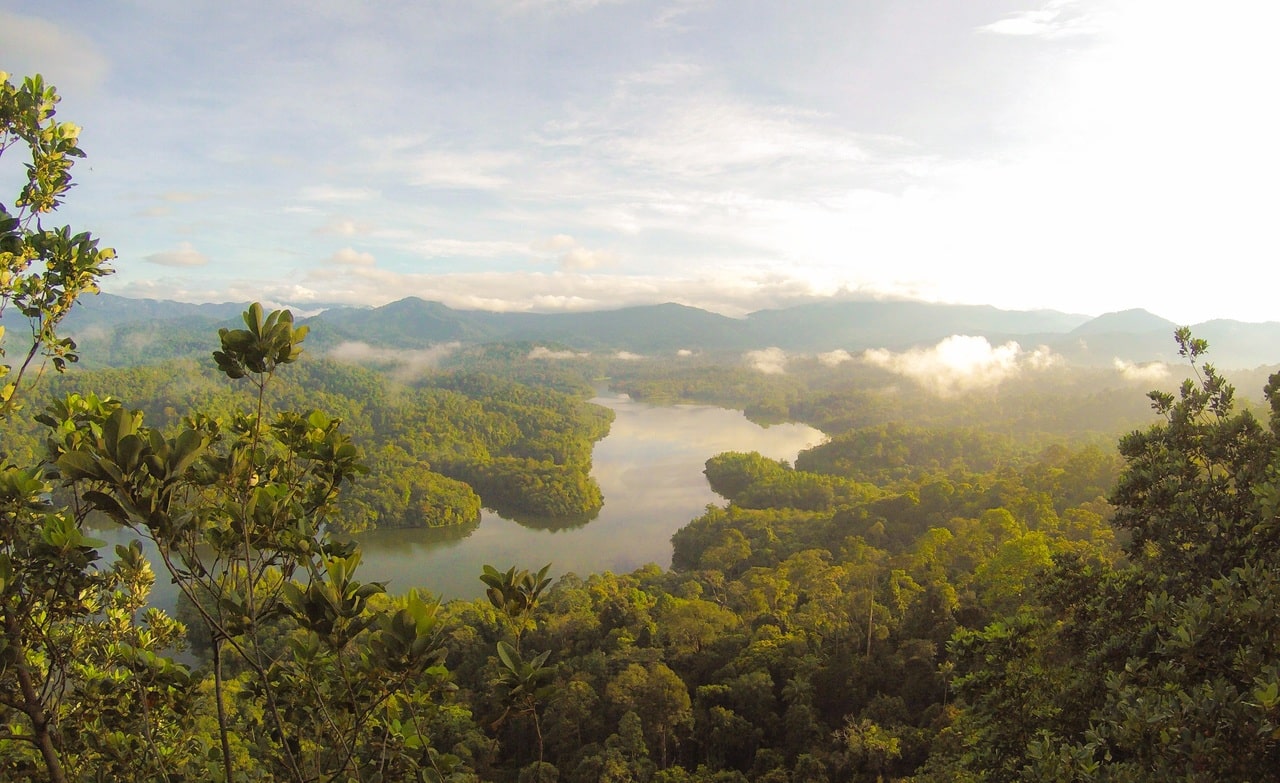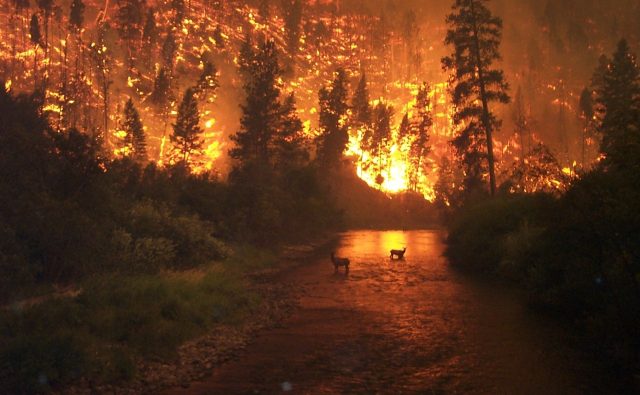

When you think of illegal drugs, the environment may not be the first thought in your mind. Contrary to what most people may believe, illegal drug use does harm the environment in multiple ways.
Cocaine is one of the most serious offenders in the drug world. Before we get into the actual process by which cocaine harms the environment, let’s go over some of the basics about the drug itself.
Cocaine is an illegal drug that is fairly common among those who are addicted to drugs. Its effects are noticed very quickly, but also disappear very quickly as well. Due to its short-term effects, cocaine is often abused multiple times a day and can lead to severe health consequences. [1]
Due to the short length of time that cocaine affects the user, it can get very pricey very quickly. Many people find themselves becoming so addicted that they dose multiple times a day and run through their savings quickly.
Cocaine also has some serious health effects which can even lead to death. Cocaine is so damaging to the heart that even a first-time user can have a fatal heart attack. Cocaine alters the body in some serious ways, leading to high blood pressure, stroke, heart attack, and increased body temperature.
In addition to the physical effects listed above, cocaine also has some powerful mental effects. Cocaine can cause feelings of anger, irritability, anxiety, and paranoia.

Cocaine is one of the most environmentally destructive drugs on the planet. Cocaine production doesn’t just end up causing pollution, but actually destroys the rainforest itself.
In order to understand how cocaine affects the environment so much, we need to back up and look at how cocaine is created.
Cocaine is extracted from coca leaves, which are found primarily in the Amazon rainforest in South America. The amazon is a massive rainforest and makes up a significant portion of the world’s trees and biome.
Drug cartels and smugglers create cocaine from the leaves of the coca tree. The process by which cocaine is created is extremely inefficient and involves cutting down many trees to make a small amount of powdered cocaine.
This means that the higher the demand for cocaine becomes, the more coca trees are needed. Cartel members and other cocaine producers are constantly being met with a huge demand that they seek to fill.
This demand leads to them chop down the rainforest in order to clear room for more coca trees. Cocaine producers don’t care about the environment, plant life, or animal life in the area, and often cut or burn down large portions of the Amazon rainforest in order to make room for more coca trees.
This leads to out of control fires and the loss of many different species of plant and animal life. There are many species of animals that live in the Amazon rainforest that are now endangered due to these practices. Some endangered species in the amazon include golden lion tamarin monkeys, poison dart frogs, harpy eagles, and jaguars.
Besides harming the environment, cocaine harms billions of lives every year. There are obvious cases such as those who use cocaine personally, but there are other cases you might not have thought about yet either.
Gangs in Columbia and other parts of the amazon rainforest are always doing what they can to produce as much cocaine as possible. They generally don’t care about human life, the environment, or anything else besides money.
There is so much gang violence and competition for cocaine production that many people are killed by gangs in the area. These gangs are fighting for control of portions of the Amazon so that they can produce even more cocaine. In addition, gangs will often place land mines and other incendiary devices throughout the rainforest so that people won’t steal their crop of coca trees.
These landmines claim hundreds of innocent victims' lives every day, and also cause the death of many animals in the rainforest.
Native tribes and other people who live near or in the amazon are often uprooted and have their possessions stolen or burned by gangs who are creating more space for their cocaine production efforts.
Children are often used as manual labor for harvesting coca leaves and treated inhumanely. They are even sometimes told to use cocaine, and subsequently, become addicted. These inhumane labor forces are used to destroy the rainforest and harvest coca leaves, which are then turned into the drug cocaine.
In addition to harming animals, plant life, and the environment, cocaine usage has some seriously damaging effects on individual communities. Cocaine sales put more and more money in the pockets of gang members, which trickles back into the pockets of those cartels who destroy the environment to produce more and more of the drug.
This also leads to violence in the community, as many gangs and individuals fight over rights to sell cocaine, and even fight over usage of the drug itself.
In the USA, law enforcement spends over $25 billion every year on drug treatment, prevention, and enforcement actions. A good portion of this drug-related spending is from cocaine itself, which means cocaine is harming people, animals, the environment, and even indirectly increasing the amount we pay for taxes.
Cocaine may seem like any other illegal drug, but it has some serious lasting effects that go beyond just the user’s life. Cocaine production is responsible for major environmental destruction.
This environmental destruction has led to the endangerment of multiple species, the destruction of native tribes, and the destruction of the rainforest itself.
In addition to the environmental issues noted above, cocaine is responsible for billions of dollars of government spending, and only amplifies gang-related crimes in countries around the world.
[1] https://www.drugabuse.gov/publications/research-reports/cocaine/what-are-short-term-effects-cocaine-use
[2] https://sites.psu.edu/endangeredenvironment/2016/02/12/the-amazon-rainforest/
Deforestation is closely linked to cocaine production, particularly in regions where coca plants are cultivated. To create space for coca plantations, farmers often clear large areas of forests, leading to significant deforestation. This destruction of forest habitats not only contributes to environmental degradation but also disrupts ecosystems and threatens biodiversity. Moreover, deforestation increases soil erosion and runoff, negatively impacting water quality and further exacerbating environmental damage. Therefore, deforestation driven by cocaine production has far-reaching environmental consequences beyond the immediate cultivation areas.
Illegal drug laboratories used in cocaine production can have severe environmental impacts.These labs often operate clandestinely in remote areas, where they dump toxic waste materials, such as solvents, acids, and other chemicals, directly into the environment. This contamination can lead to soil and water pollution, poisoning local ecosystems, and posing health risks to wildlife and nearby communities. Additionally, the construction and operation of drug labs may involve deforestation, habitat destruction, and disruption of sensitive ecosystems. Furthermore, the use of chemicals in cocaine processing can contribute to air pollution, affecting air quality and potentially harming human health. Overall, the environmental impacts of illegal drug laboratories used in cocaine production can be significant and long-lasting, posing threats to biodiversity, ecosystems, and public health.
Cocaine usage contributes to climate change through various indirect mechanisms. One significant factor is the deforestation associated with coca cultivation. Clearing forests to make way for coca plantations releases carbon dioxide stored in trees into the atmosphere, contributing to greenhouse gas emissions. Additionally, the illegal drug trade often involves long-distance transportation routes, which rely heavily on fossil fuels, further exacerbating carbon emissions and air pollution.
Moreover, the chemicals used in cocaine production, such as fertilizers, pesticides, and solvents, can have harmful environmental impacts, including soil degradation, water pollution,
and disruption of ecosystems. These environmental stressors can contribute to climate change by altering natural carbon and water cycles and reducing the resilience of ecosystems to climate-related disturbances. Overall, while cocaine usage itself may not directly emit greenhouse gases, its production, transportation, and associated environmental impacts can indirectly contribute to climate change.
The potential long-term consequences of cocaine-related environmental damage are significant and far-reaching. Deforestation associated with coca cultivation can lead to the lossof biodiversity, disrupt ecosystems, and cause soil erosion, which may take decades or even centuries to fully recover. This loss of forest habitats threatens endangered species and reduces ecosystem resilience to climate change and other stressors.Moreover, soil and water contamination from chemicals used in cocaine production can harm human and ecosystem health, leading to chronic health issues for local communities and loss of agricultural productivity. The degradation of natural resources undermines local economies, exacerbating poverty and social inequalities. Indirectly, cocaine-related environmental damage contributes to climate change, which poses risks to global ecosystems, human health, and economic stability. Addressing this damage is crucial for safeguarding ecosystems, communities, and future generations.